Up Next

When 17-year-old Max Verstappen drove a Toro Rosso Formula 1 car in first practice at Suzuka in 2014, there was already a huge buzz around him.
He lapped the car at around its usual level of competitiveness without hint of incident and spoke afterwards about he had just been acclimatising, that he was nowhere near his limits.
A couple of days later, 29-year-old Lewis Hamilton dominated the race, sometimes pulling out one second per lap over Mercedes team-mate Nico Rosberg in tricky wet-dry conditions before it was red-flagged for the tragic accident of Jules Bianchi.
That Friday session marked the arrival of the pretender to Hamilton’s throne. The challenge wouldn’t be for a while yet, but it was coming, the day when the young cub would challenge the king of the pride.

Some observers were dubious about someone so young being in an F1 car, but they hadn’t grasped the scale of talent or the supreme confidence.
Did 17-year-old Verstappen believe Hamilton was the best driver out there, he was asked. “I don’t know,” he replied. “Give me his car and I will be able to tell you.”
Yeah, it was brash and not a little crass – he was a teenager, after all – but for Verstappen, F1 has never been that big a deal. It’s just an extension of racing, ‘like a big kart meeting’ as he once described how a grand prix feels from his own perspective. He’s always lived within racing, has never existed outside of it. He was literally born into it.
His rookie season of 2015 showed enough that he was in the senior Red Bull team by the fifth race of the following season – and he won it. He was aided immeasurably in this by Hamilton and Rosberg colliding on the first lap. But nonetheless, there was 18-year-old Verstappen soaking up the pressure of Kimi Raikkonen’s chasing Ferrari like winning a grand prix was no big deal. Just another little signpost along the way.
Hamilton’s Mercedes was invariably faster than Verstappen’s Red Bull over the following few seasons so the day would be delayed, but it was surely coming.
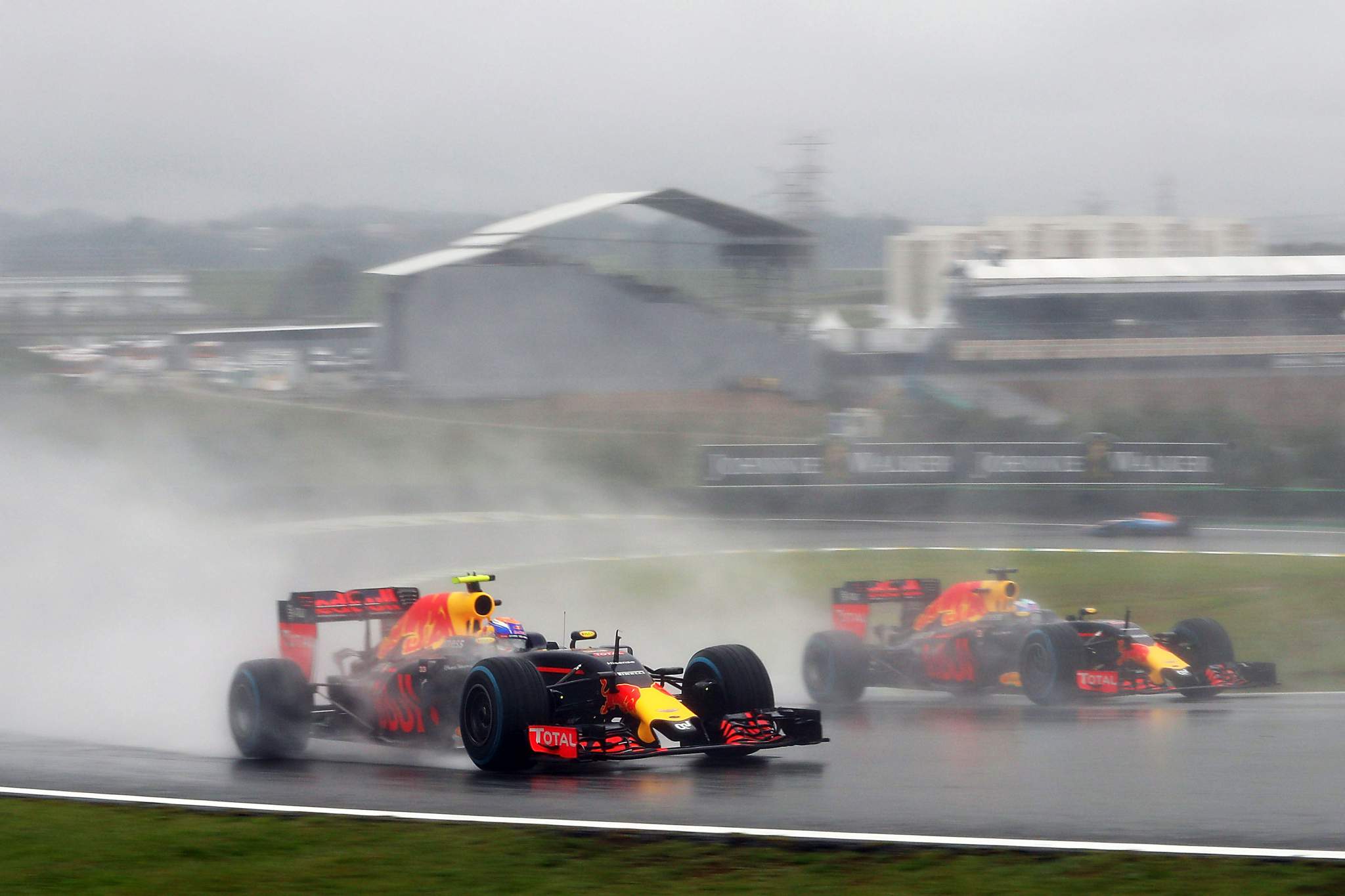
At the end of that 2016 season, there was a wet race in Brazil. The Mercedes and Red Bull were still just a little too far apart on performance for it to be the day of reckoning when the mettle of the pretender could be fully tested.
There were instead two separate demonstrations of genius – Hamilton’s leading from the front absolutely untouchable, in his own personal groove. Then there was Verstappen’s epic fight through the pack, finding the grip offline and making those he was racing look like rookies.
Then a dramatic half-spin at the top of the hill, completely sideways at very high speed but the correction applied quickly enough to prevent a full spin, scrubbing the speed off within the width of the track, then releasing the clutch to induce a small power slide to change its trajectory away from the barriers – and he was on his way. It cost him around four seconds. On the very next lap, he was a full second faster than the chasing Rosberg. At one point he applied some pressure to Hamilton, who just stepped up the pace in response.
But the Mercedes was a faster car by around half-a-second and was leading from the front; this little snapshot just made the prospect of the inevitable battle to come all the more exciting. “I think we witnessed something very special today,” said Christian Horner afterwards and it was impossible to disagree.
We’re still waiting for the definitive duel over a season in equal cars. But since that day in Brazil 2016, we’ve had a few little teasers, though that’s all they have been.
Inevitably Hamilton in a generally (but not always) faster car has been trying to chase world titles and there’s been nothing serious at stake for Verstappen, allowing him a more aggressive gung-ho manner in their few encounters. But they make up part of the puzzle.
Any difficulties for Mercedes – a track unsuited to its car, or tyre difficulties – and Verstappen has invariably been there ready to pounce. Which hasn’t been quite as satisfying as a series of straight duels in equal cars – and with Ferrari giving Charles Leclerc a say in the matter too – but it has had to suffice. It has at least given us nine more briefly electrifying duels.
Malaysia 2017
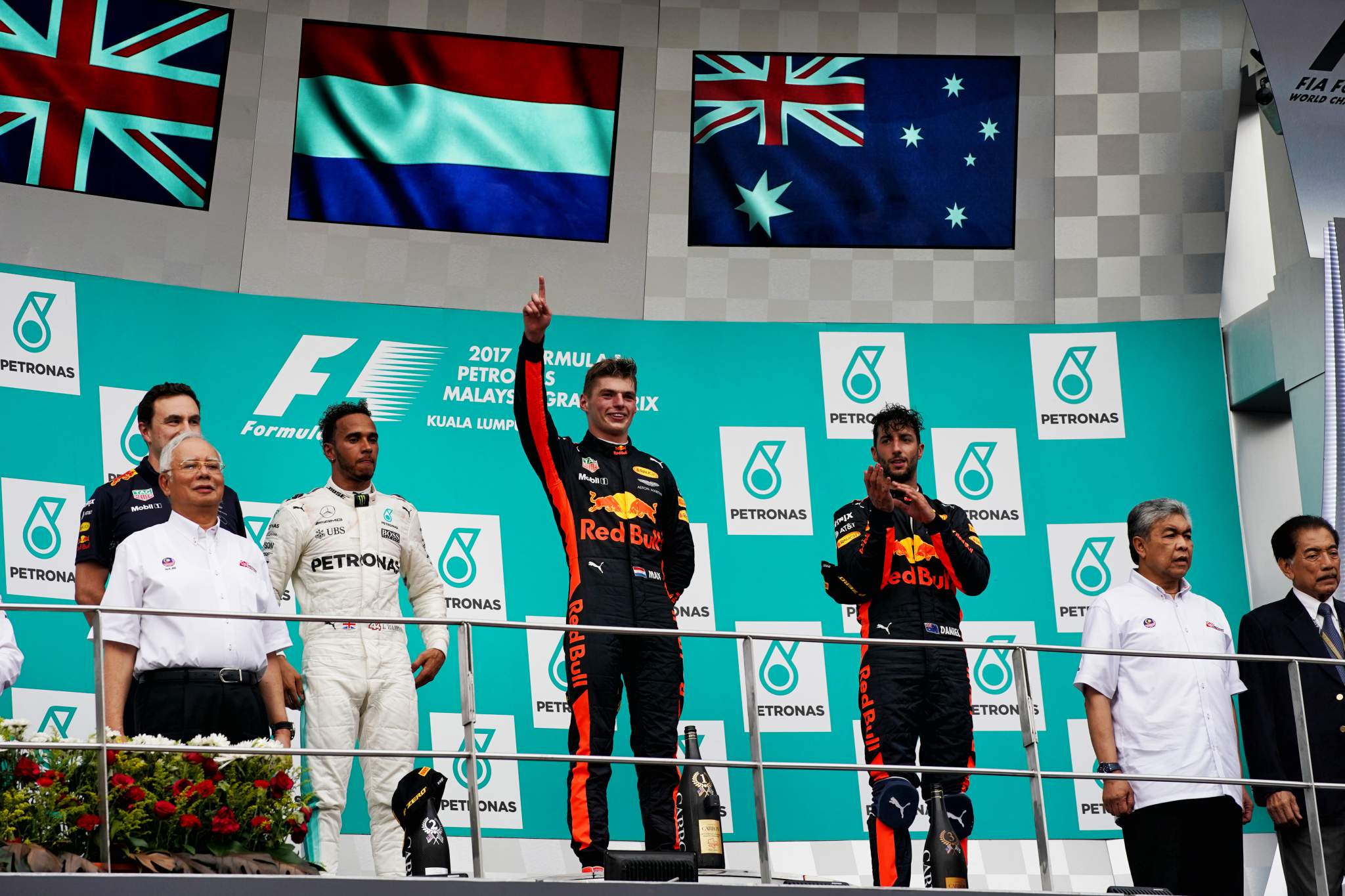
Late-season and Hamilton was nursing a handy points lead at the head of the championship. But around Sepang, the diva Mercedes W08 wasn’t working well. It really didn’t like circuits with too big a spread of corner speeds as it couldn’t be adequately balanced for both slow and high speeds and Sepang’s lap time-critical corners had one of the biggest spreads of all.
The practices suggested Ferrari was going to walk it. On race pace, it had around a second over the Mercedes, with the Red Bull poised about halfway between. But the Ferraris both broke down – Sebastian Vettel’s before it had done a lap of qualifying, Raikkonen’s on the way to the grid. Which seemed to have opened the door to Hamilton, who’d snatched pole from the now non-starting Raikkonen by a scant few hundredths of a second. Verstappen had other ideas.
The Red Bull in race trim was faster – by around 0.5s. That had been cancelled out in qualifying by the Mercedes’ special engine mode. But on race day that advantage returned.
The GPS analysis showed the Red Bull and Ferrari quite evenly matched on cornering speeds – the RB13 with the edge into and through the slower turns, the SF70H through the fast sweeps of sector two – but the Ferrari was getting down the straights a lot faster.
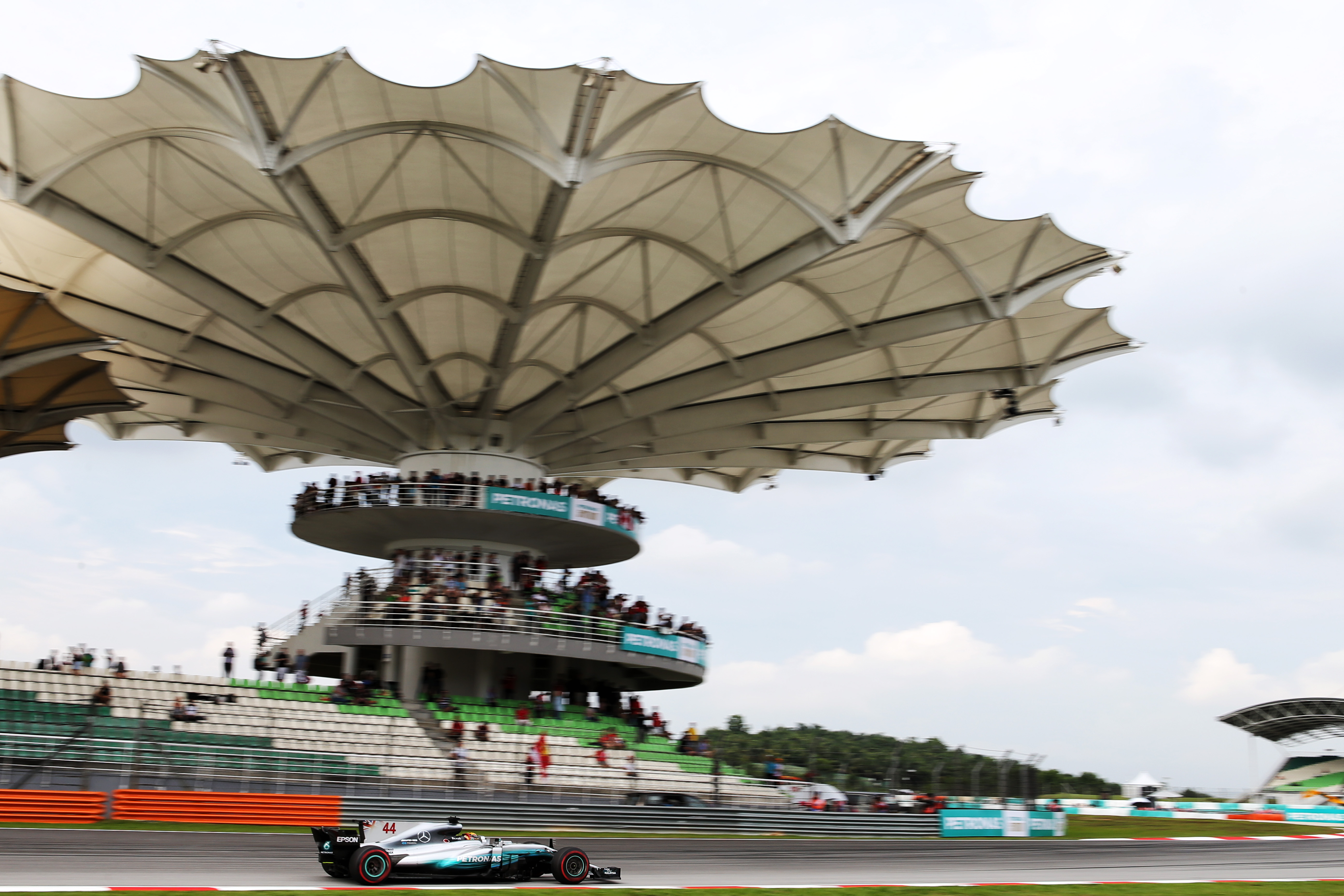
By comparison, the Mercedes was slow in the slow turns and only briefly competitive in the faster ones, until its tyres began to degrade. It had the best end-of-straight speeds but was entering them slower and actually taking longer to get down them. Its balance and tyre overheating could be ameliorated over one lap. But Mercedes’ own reading was that it was the least competitive it had been all season.
Could Hamilton, chasing his fourth title, hold off an aggressive Verstappen in a faster car with nothing to lose? The challenge going in for Mercedes was the longer you could make the much faster super-soft last, the quicker you were going to be. So the ill-balanced Mercedes, with its faster-wearing fronts and overheating rears, was potentially going to be a sitting duck to the better balanced Red Bull around the pitstops even if Hamilton could somehow prevent it from overtaking him before then. Mercedes’ race sim software was suggesting that Vettel, starting from the back in the Ferrari, would be up with its cars by the end of the race.
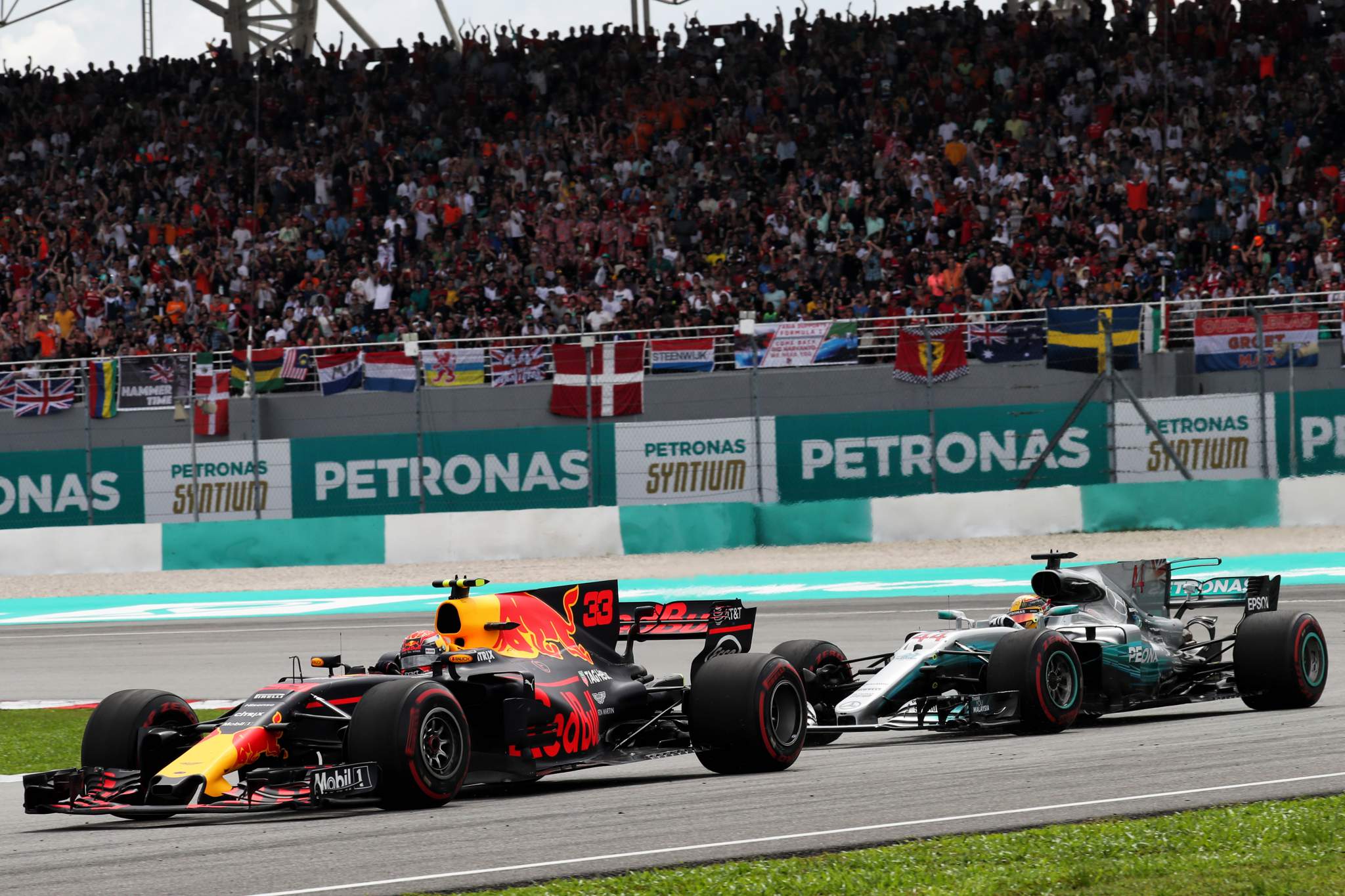
Verstappen – having repelled Valtteri Bottas robustly – was all over Hamilton like a rash from the very first lap, probing him, filling his mirrors, looking for a gap. There was going to be no let-up. Max didn’t look like a driver waiting to do it at the stops.
Here was his moment and he was relishing it, the Red Bull all instant direction changes in the slow turns, very much in contrast to the Mercedes’ visibly lazier responses.
Hamilton was being forced to use his battery power in the critical parts of the lap to keep the Red Bull behind, but that was eating away at his energy store. He was using more than he was able to put back in – and Verstappen was ruthlessly making him do it.
“The long-game approach that I took is the right one. There was no need for me to really battle with Verstappen, who was much quicker” :: Lewis Hamilton
On the fourth lap, with the DRS now enabled and his battery nicely full, Verstappen was told as he entered the pit straight, “This is your moment. Go for it.” He didn’t need any clarification and after tracking the Mercedes past the pits simply threw the car down the inside.
At this very moment Hamilton’s brain was frying because he’d just been told his tyres were already overheating and simultaneously he suffered a battery de-rate at the worst possible time, as the system’s software tried to monitor out the available energy store. All that and Verstappen monstering him! He thought about blocking the move, but title priority made him go against all his instincts. Reluctantly, he let Verstappen go.
“I’m naturally questioning myself,” said Hamilton after a race in which he finished 13s behind the victorious Red Bull, thankful that Bottas had managed to hold off Daniel Ricciardo’s RB13 long enough to keep him off his back before the end, for he was catching quick.
“But I think overall, the long-game approach that I took is the right one. While initially it doesn’t feel like the best one, I think it is the best decision because there was no need for me to really battle with Verstappen, who was much quicker. He pulled away by up to eight-tenths a lap, so there was no way I was going to be able to keep him back around this place.”
Japan 2017
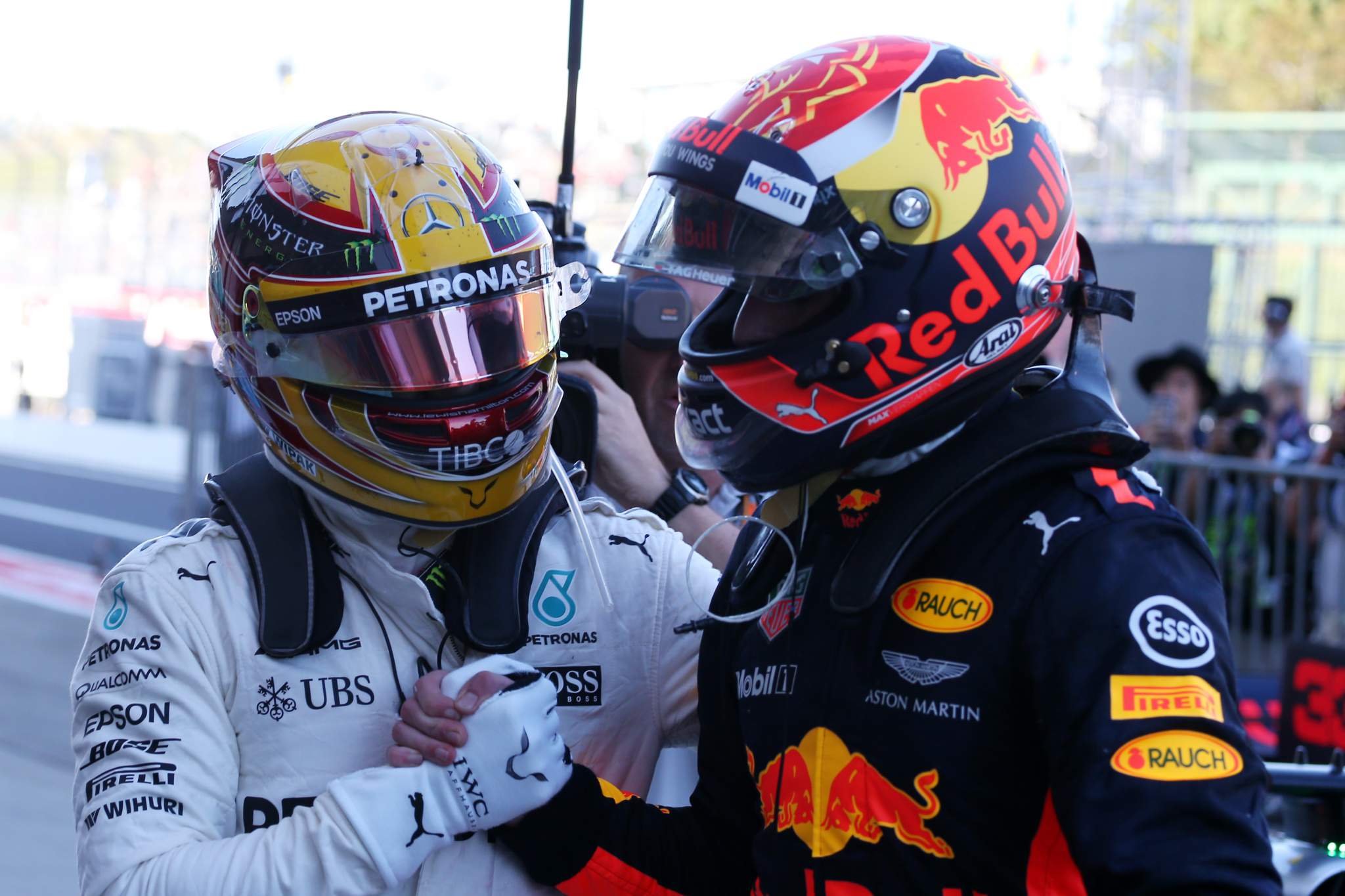
Just a week after Malaysia, Hamilton and Verstappen were fighting it out again, this time around Suzuka, a track where the two cars were much more evenly matched. Without a qualifying engine mode, there was no way Verstappen could do anything about the Mercedes in qualifying. Hamilton took pole (from Bottas) by 0.35s. Verstappen was over 1s slower, starting from fourth.
In race trim the Mercedes remained faster, but not by enough to give Hamilton a comfortable ride. The Red Bull was close enough that Verstappen could make a race of it, again hoping to capitalise on Hamilton’s title concerns.
“I’m thinking ‘Jeez, the guy behind me is so much younger than me, I’ve got to make sure that I stay ahead, show that I’m actually still very young at heart’” :: Lewis Hamilton
Hamilton led away, Verstappen pounced upon a misfiring Vettel to go second on the opening lap and set chase for the Mercedes. That’s how it was for the rest of the afternoon, Hamilton monitoring his resources, anxious not to overwork the tyres, Verstappen not letting him off the hook, pushing relentlessly with nothing to lose. The rest were left well behind.
It was a hot day, which was making it something of a challenge to keep the tyres in good enough shape to do the quicker one-stop strategy. The Mercedes had the edge in peak speed but the Red Bull was looking after its tyres better. Because the tyre deg was so high, the undercut gap was way bigger than usual. Teams will normally run to 2s past their peak pace. But here it was more like 3s – as that was still faster than the two-stop because of Suzuka’s big pit stop time loss. So Hamilton was trying to get around 3.5s out of Verstappen’s reach before the pit stop window opened.
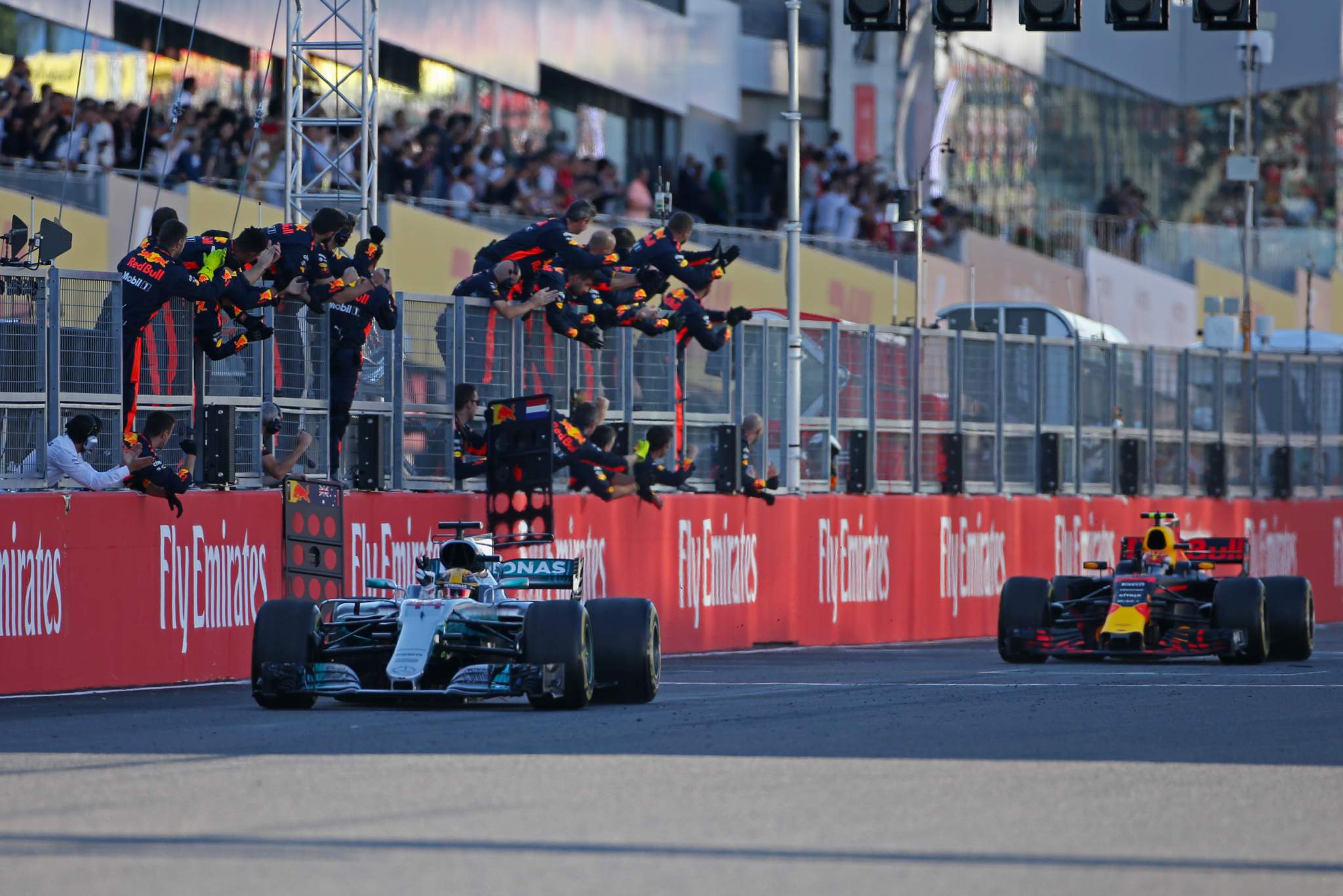
Verstappen tried to give chase but each time he really leant on it, the front-left would begin to overheat. Verstappen was 5s behind when Red Bull brought him in. Mercedes responded with Hamilton on the following lap – and he emerged still comfortably leading. For this stint, Verstappen decided, he would nurse the tyres early-on and hope to attack at the end. That’s how it played out in the closing laps, with Verstappen coming back at the Mercedes, Hamilton keeping a wary eye on his mirrors.
A late VSC presented Hamilton with a particular problem as the worn rubber was very reluctant to switch back on. The Red Bull was able to fire up the tyres better and Hamilton had to use the traffic on the restart, putting a car between him and his pursuer to give him time to generate that temperature. It was enough – as Hamilton took the victory, Verstappen close in his wake.
Afterwards, Hamilton was making no bones about the threat he felt from his younger rival. “I was kind of like – he won the last race, ‘I’m not letting you have this one’. I was driving down the back straight at one point and I’m thinking ‘Jeez, the guy behind me is so much younger than me, I’ve got to make sure I kind of man-up and show my age, make sure that I stay ahead, show that I’m actually still very young at heart’. That was kind of my thought process.”
Bahrain 2018
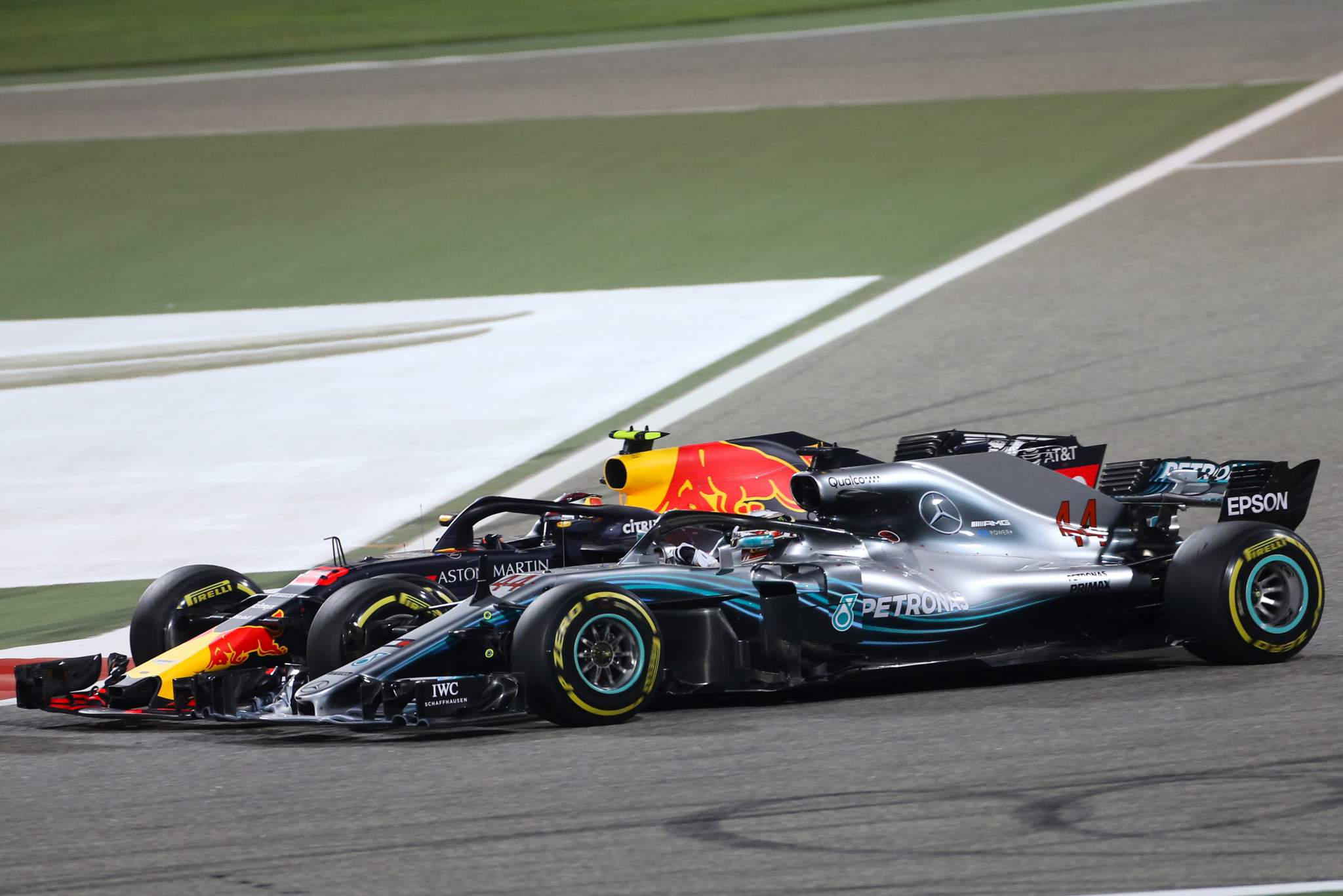
Early season and the two contests with Verstappen at the end of ’17 were still clearly fresh in Hamilton’s mind. Here, they were each in the wars. Hamilton, who could qualify no faster than fourth-fastest in a Mercedes reluctant to change direction, was taking a gearbox change penalty and thus starting ninth. Verstappen meanwhile had crashed out of Q1 and was starting near the back.
They’d each be coming through the field on race day.
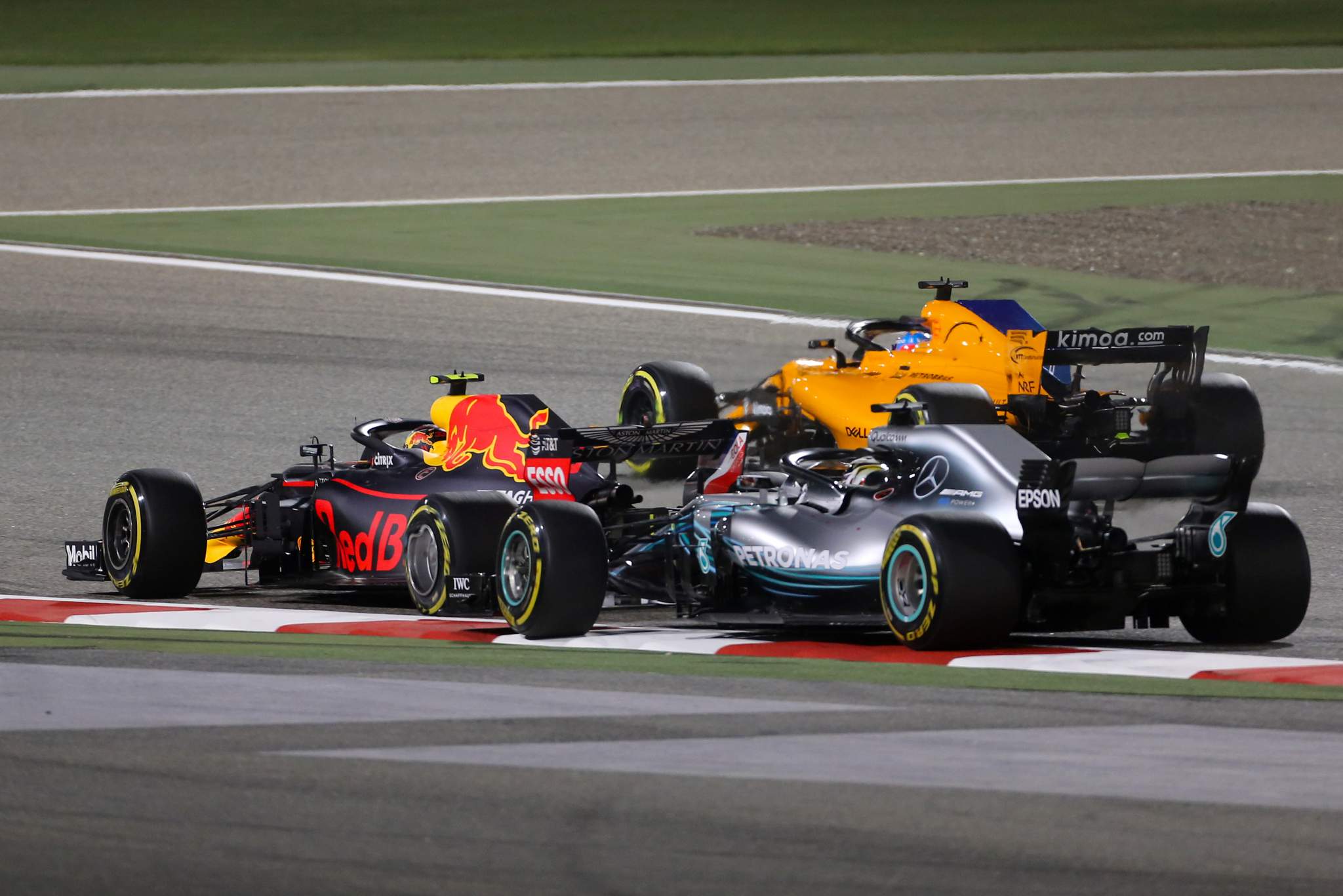
On the opening lap Verstappen made quick work of the slower cars but Hamilton was more circumspect, choosing not to get involved in an aggressive Ocon/Hulkenberg/Magnussen dice just ahead of him. Which allowed Fernando Alonso to pounce, which in turn put Verstappen right on Hamilton’s tail as they completed the lap.
Hamilton was later overheard in the green room saying Max needed to show some respect
Hamilton was slow through the final turn, Verstappen was tight in his slipstream down the pit straight and made a bold move down the inside, sparks cascading into the night sky. Hamilton hung on around the outside of the first part of the right-left flick of Turns 1-2 but Max was in front.
Verstappen, eager not to get boxed in by Alonso ahead, moved across on Hamilton – who could have given racing room but chose not to. It was difficult to think this was not Hamilton making a point by stubbornly refusing to surrender. They touched and the Red Bull took a puncture, ruining Verstappen’s race. Hamilton was later overheard in the green room talking to Bottas saying Max needed to show some respect. He had clearly got into the champ’s head.
China 2018
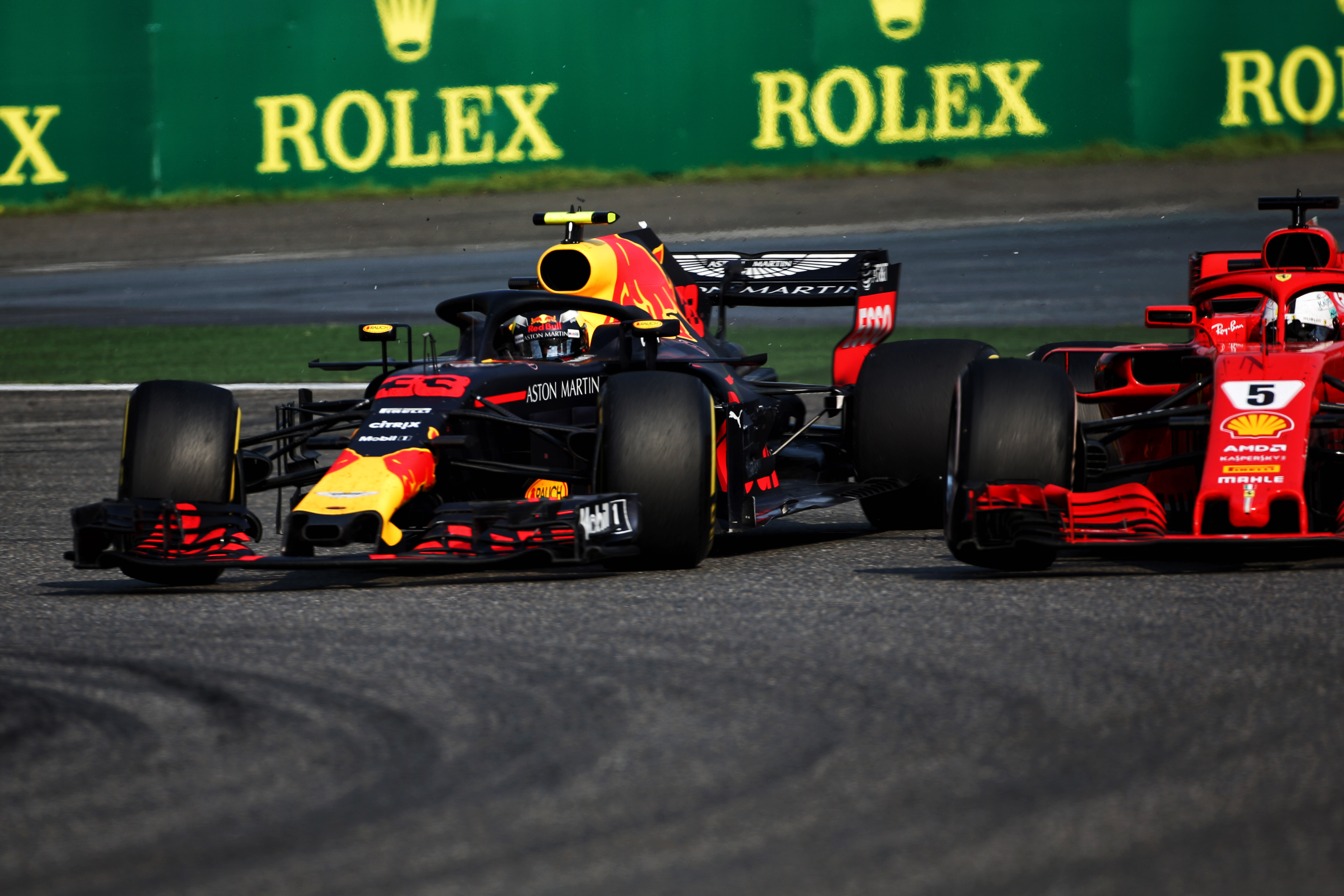
One race after their Bahrain collision, Hamilton and Verstappen had publicly shaken hands and put the incident behind them.
The Mercedes trailed the Ferraris in qualifying, with Hamilton lining up fourth, comfortably faster than the Red Bulls over a lap but with Verstappen nonetheless starting just one place behind. Verstappen took fuller advantage of a wild first few corners, initiated by the Ferrari drivers leaning on each other. As Hamilton had tried for Raikkonen’s outside through Turn 3 but failed, it allowed Verstappen to pass the Mercedes.
Verstappen had so much more grip he could easily have been more patient. But Hamilton reckoned he might be able to tempt him into something rash
A subsequent Raikkonen tank-slapper gifted Max a further place, putting him third. He was in that position as a late safety car came out and Red Bull took the opportunity of pitting both its cars for new tyres. Which put Verstappen and Ricciardo on brand new tyres chasing Hamilton on 17-lap old rubber – and the leaders Bottas and Vettel, also on old rubber, just up ahead. There was an ambush race win here for Verstappen’s taking.
He had so much more grip he could easily have been more patient. There were still 20-odd laps left. But Hamilton reckoned he might be able to tempt him into something rash.
Verstappen was all over him as they came up to the fast sweep of Turn 7 – a lapping spot at best, certainly not a conventional passing place. Hamilton left a tempting gap to his outside – and Verstappen went for it. Hamilton appeared then to correct some non-existent oversteer, forcing Verstappen to run wide onto the run-off. In that moment Ricciardo won the race – with Verstappen later colliding with Vettel to make matters worse. Had Hamilton ever known anyone try a pass at Turn 7? “Mmm, certainly not a top driver,” he said.
USA 2018

Hamilton was in the late stages of trying to clinch his fifth title and coming back through the field after an extra stop, trying in the race’s late stages to take second from Verstappen.
Mercedes had gambled with its strategy in trying to win the race from Raikkonen – but it had given Hamilton way too much distance to make up on degrading tyres. He’d used up the best of them in making up the 10s by which he’d trailed the Red Bull after his extra stop. But if he could pass, second place would clinch him the title.
Verstappen was not giving an inch and happy to dice hard. With two laps to go he was slow out of Turn 12 at the end of the back straight, giving Hamilton a run on him through the slow following turn which they went through side-by-side. Verstappen refused to surrender and the wheel-to-wheel dice lasted for the next few corners until Hamilton used the run off on the exit of Turn 18, effectively surrendering rather than risk contact and a non-finish.
“I thought you gave me a lot of room,” said an amused Verstappen later. “Yeah,” said Hamilton, “I never know with you. I didn’t want a coming together…”
Monaco 2019

An early safety car had obliged pretty much everyone to make their single stop then eke out the tyres until the end. Mercedes had fitted the race-leading Hamilton with mediums (so as not to be vulnerable on the restart). Red Bull fitted Verstappen with hards.
Which ensured Hamilton was set for a super-difficult race as his tyres gave out long before Verstappen’s.
But Hamilton had track position. Which is invariably king at Monaco. Hamilton just set about putting his car in all the right places and sparing the tyres. It happened to be Verstappen on his tail but in reality it could’ve been anyone on more durable tyres; the task was the same. Verstappen – carrying a time penalty for an unsafe pit release – pressed him as hard as possible but the defence never cracked.
Verstappen made an impossibly late dive down the inside into the chicane on the last lap and contact was made – obliging them both to miss the chicane – but it wasn’t enough to change the outcome.
Hungary 2019
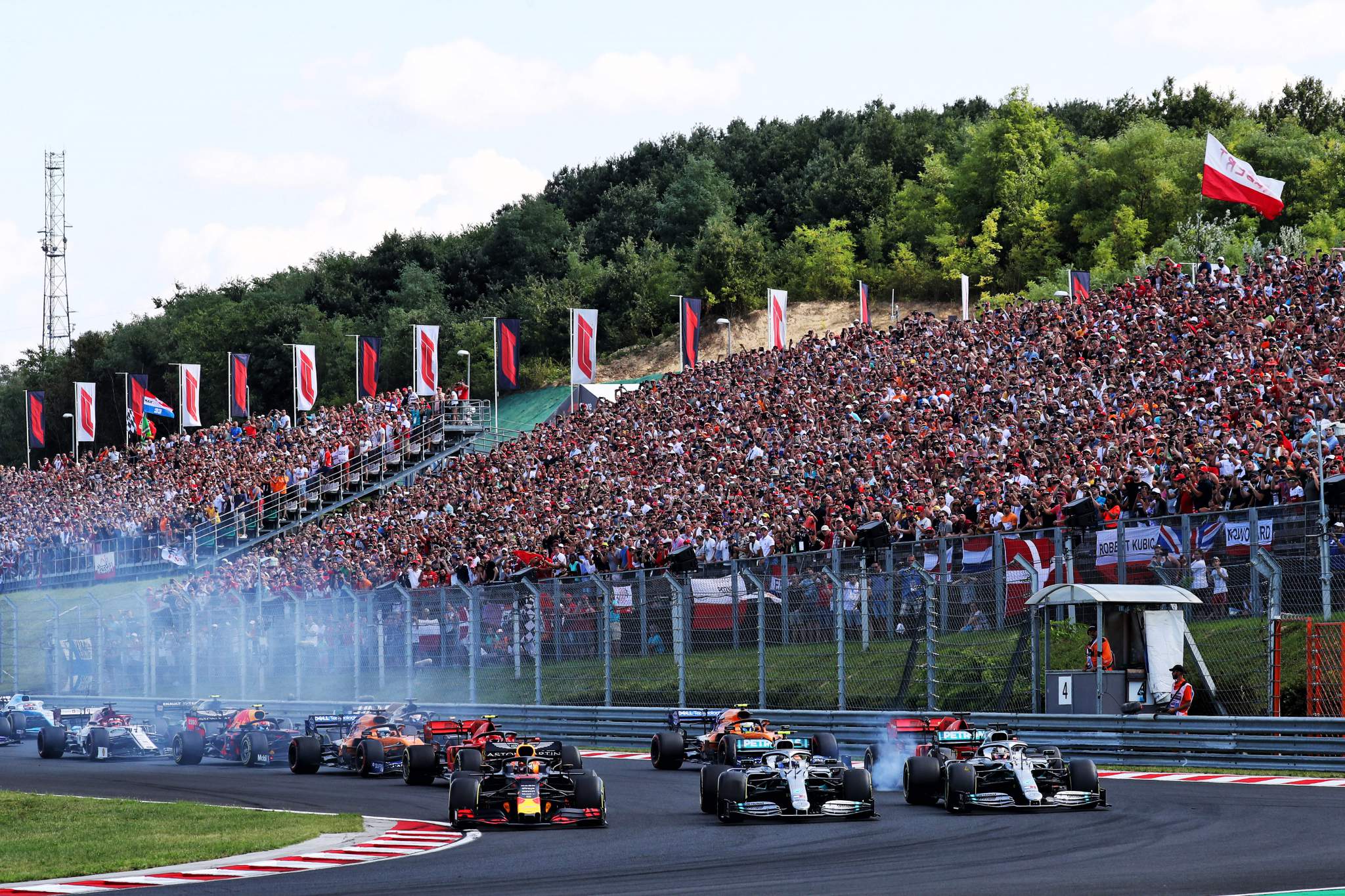
This was a fascinating development in the psyche of the pair’s contests.
The Hungaroring was the perfectly configured track for the Red BulI, rewarding its great downforce with its long corners and not punishing its power shortfall to Mercedes too much. The circuit’s corner speed spread has historically tended to make things more difficult than usual for Mercedes. So it was here, as Verstappen took his first pole position, with Hamilton an understeering third on the grid.
If Red Bull’s second car could have stayed within a pitstop gap’s-worth of time of the duelling Verstappen and Hamilton on race day, Verstappen would have won, no question. Hamilton had got close on his fresh tyres after the pitstop and had the momentum on Verstappen as they raced up to the fast Turn 4. Hamilton went for the bold outside move but couldn’t make it stick.
Verstappen had actually left him racing room, but clearly Hamilton hadn’t trusted that it would remain there and chose to take the run-off. That looked to be his challenge over, as his tyres now no longer had that grip advantage.
But so big was the gap back to third place, Mercedes was able to gamble on an unplanned extra stop for fresh rubber. It would put Hamilton 20s behind, but with enough laps to make it back.
Three laps from the end, with his tyres finished, Verstappen struggled for traction onto the pit straight and Hamilton was able to make a comfortable DRS pass for victory.
Mexico 2019
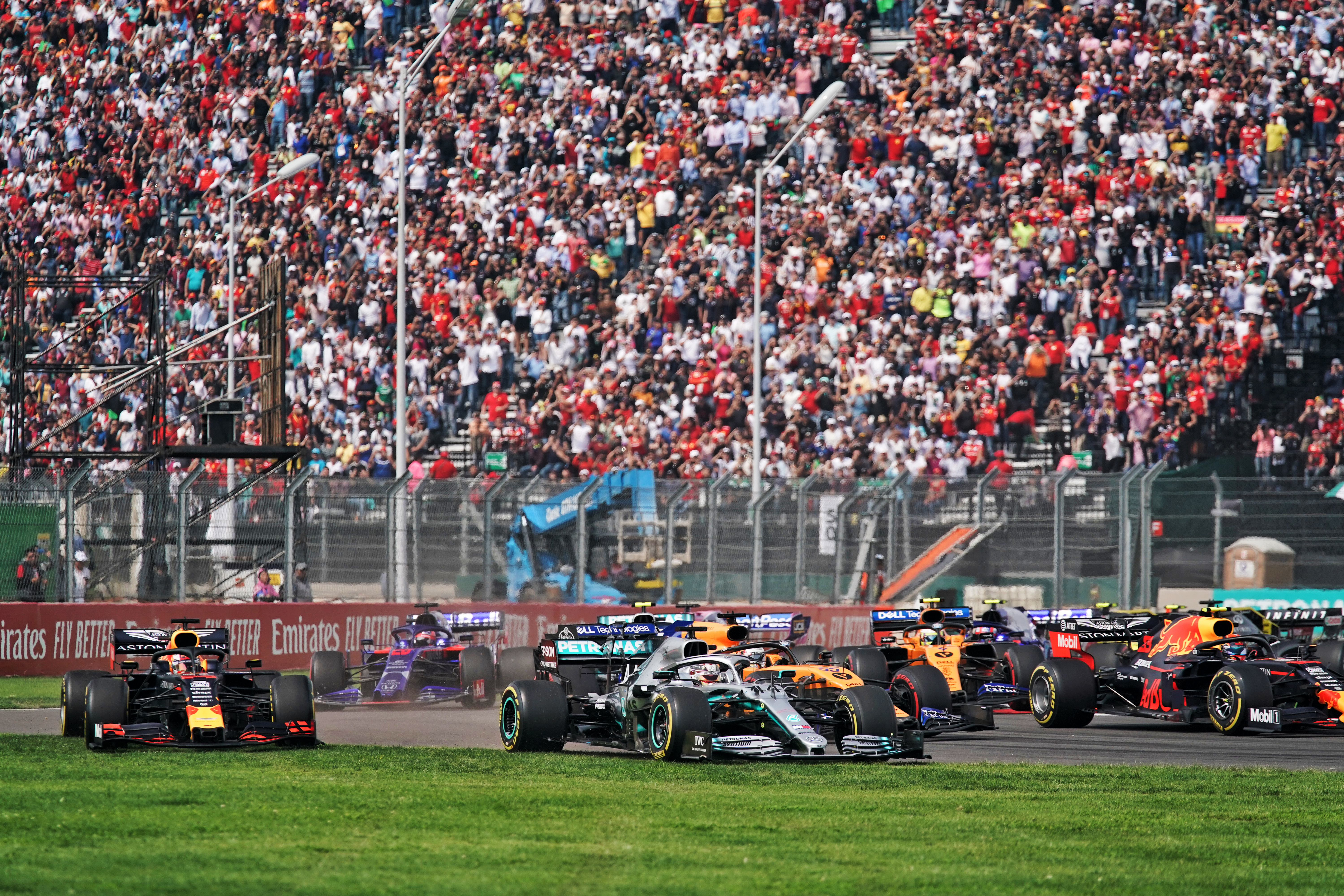
This was all played out within a few seconds of the start, but it illustrated again the tricky dynamic between the pair.
Hamilton had been compromised off the line by Vettel cutting across his bows and forcing him partly onto the grass. Which lost him just enough momentum that Verstappen was able to get alongside into the first turn.
“I always leave Max a lot of space – it’s the smartest thing you can do” :: Lewis Hamilton
Side-by-side they went through the right handed first part of the right-left switchback, with Verstappen on the inside deliberately running Hamilton out wide, knowing the Mercedes driver had a title to win.
Hamilton got as far over as he could in avoidance but as he applied the power with his outside tyre on the painted white line, he got a snap of oversteer at just the part of track that pinches the cars together for the left of Turn 2. They touched – and both took to the grass and lost many places.
“I was surrounded by a bunch of cars,” related Hamilton. “I braked into Turn 1 and all of a sudden Max is alongside me. If you’ve seen races before, I always leave Max a lot of space – it’s the smartest thing you can do. But there wasn’t a lot of space for me to give him…”
Brazil 2019
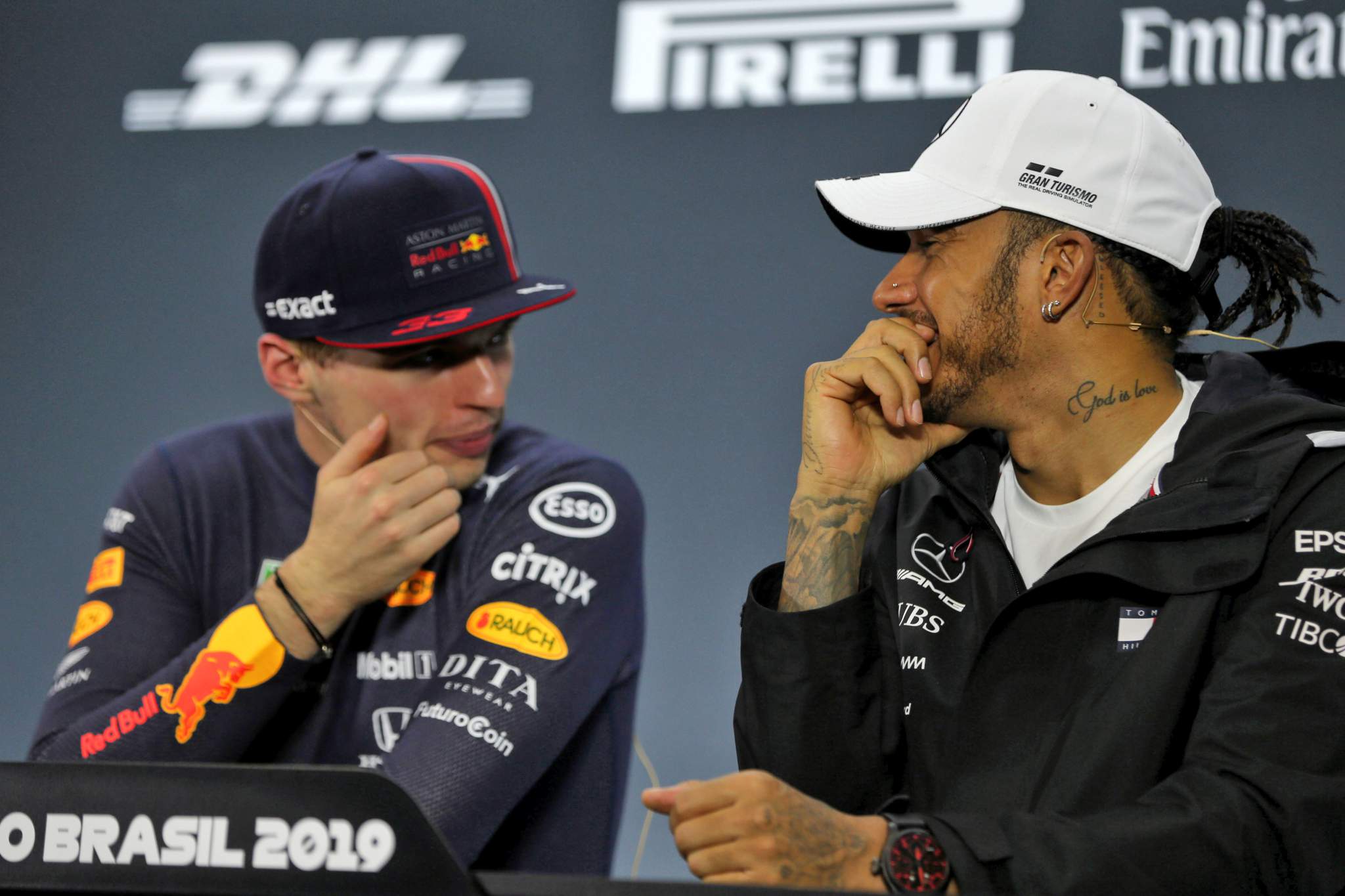
At the high altitudes of Mexico and Brazil the Mercedes power unit invariably loses performance to its rivals and in this year it was no different. The Honda-powered Red Bull was the fastest thing in the place.
Mercedes had to load the car up with wing to get a competitive lap time from it, but with its power shortfall (because of the sizing of its turbine and the limitation upon its speed, it’s unable to compensate as well as the others for the thinner air) here, that meant it was badly down to both the Ferrari and Red Bull on straightline speed. It still had a potent Q3 engine mode to partly compensate but in the practices and in Q1 and Q2, the Red Bull had 0.5s on the Mercedes.
Verstappen started from pole, with Hamilton third. “We’re seriously down on power to them here,” said Hamilton later. “We can just about keep up with them in the corners but they are so much faster down the straights.”
The time loss just from the final turn of Juncao, up the long hill and to the start-finish line, was over 0.3s.
But that didn’t necessarily make things simple for Verstappen. A scorchingly hot race day had the track temperature up at 48-deg C. The long runs of Friday had been conducted at only 24-deg C.
The tyre degradation was sure to be much higher – but no one was quite sure how much so. What had previously been set to be a sure one-stop race now began to look as if it may be a two-stop. But even then, the pace would need to be managed carefully if you were not to be caught out around the pitstops with dead tyres.
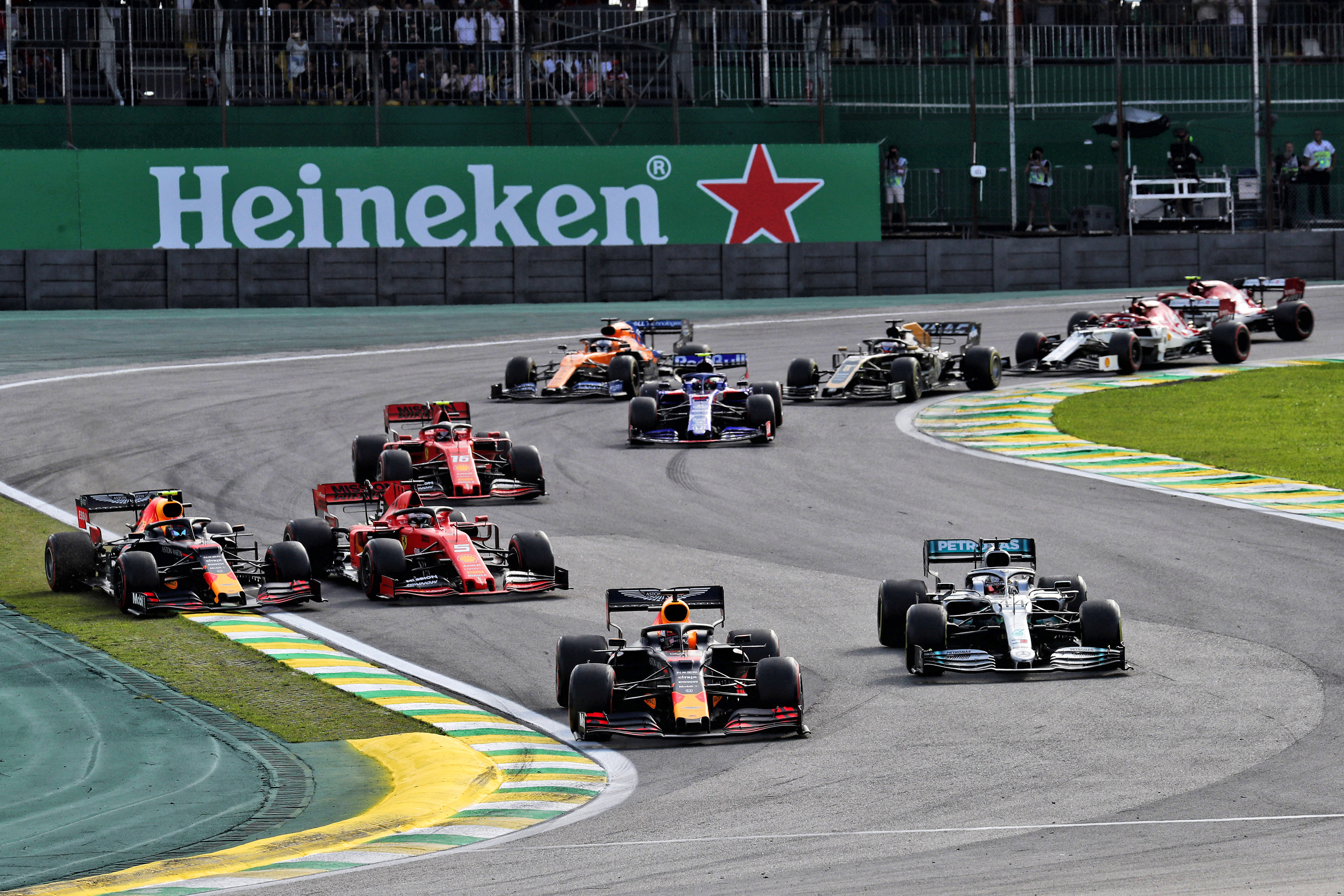
Verstappen took off into the lead, with Hamilton straight into second. In the first few laps Hamilton was surprised at how hard Verstappen was pushing, given the tyre concerns. He was keen not to be left behind, but was held in check by the Mercedes pitwall.
Only after around 15 laps did Hamilton get the go-ahead to see if he could push into Verstappen’s gap. He did so and the gap came down on the eve of the stops. Mercedes brought Hamilton in to try for the undercut from just over 2s behind. It wouldn’t normally have been enough but Verstappen, who was brought in on the next lap, was badly baulked in the pitlane as Robert Kubica was released into his path.
It was enough for Hamilton to emerge ahead, but he’d used almost all his electrical energy up on the out-lap and was a sitting duck as Verstappen – with full electrical deployment, DRS and a more powerful engine – breezed past to retake the place.
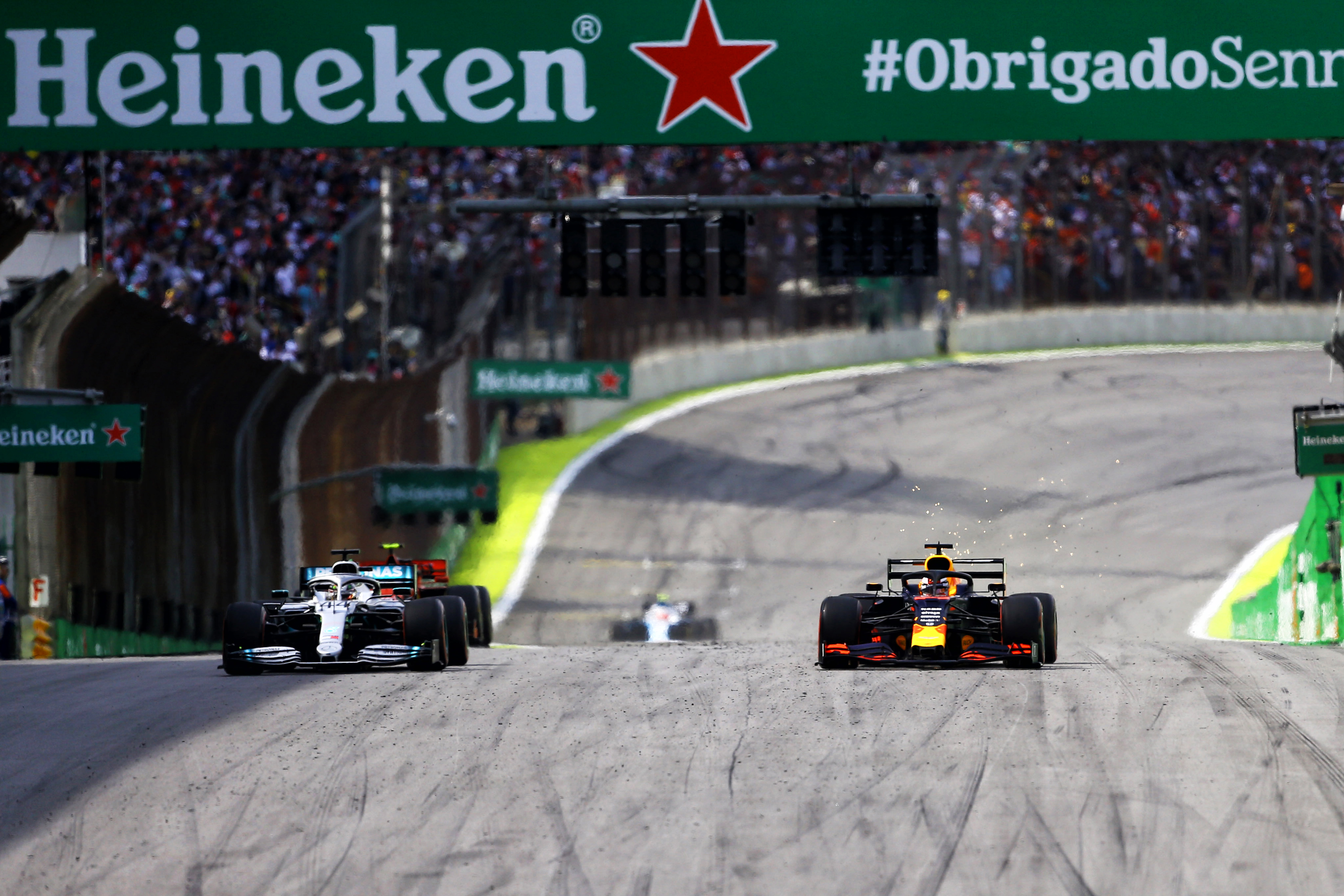
Hamilton again came close to taking the lead at the second stops, and for similar tyre usage reasons. But from 3s back the undercut attempt was too much of a stretch. A late safety car led Red Bull to bring Verstappen again in for new tyres, so as not to be vulnerable to a new-tyred Hamilton on the restart. Mercedes did the opposite and left Hamilton out, leading but on very old tyres. It was a relatively simple matter for Verstappen to retake the lead as soon as racing restarted.
Both drivers had played their hands perfectly, and their dice was clean and incident-free, but the power shortfall meant Mercedes was always on the back foot.






